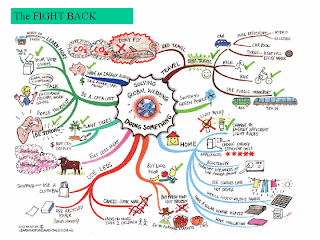I belong to a generation, which has spent a good part of life in the dark decades of our country. Like mine, many other childhoods would be closely connected to Candles and Kerosene lamps. Today, if we think that the dark days are gone, please visit our villages. Six-hour power cut is nothing abnormal. Needless to say, it worsens as summer peaks.
At this juncture, one would tend to believe that we need more and more power generating stations to cater to the ever-increasing demand. But, before concluding, let us see how is our present capacity utilized.
Our country relies on Coal based thermal power. By design, these are of lower efficiency. Here the efficiency figures are much inferior – blame it on inferior quality coal supplies. It is difficult to believe, our power generation efficiency is as low as 25%. Moreover, the gap between the installed capacity and actual power generation is huge – poor maintenance and frequent breakdown of our aging plants are to be blamed for this. Studies indicate that only 45% of our installed capacity is put into use.
So, in simple terms, if we have installed capacity of 100 units, we generate only 45 units.
Now here is the second part of the story – the Transmission and Distribution (T&D) losses – it is alarmingly high in our country. Figure published in 2005 indicates the T&D loss is 33%! One among the world toppers! To put it into perspective, T&D losses in developed countries like USA and Germany are 6% and 4% respectively. It is 7% in neighbouring China. Power theft and grid losses are generally blamed for this.
The bottom line is as follows - with 100 units generation capacity, 45 units are generated and only 30 units reach the consumers. Overall system efficiency is 30%.
The whole equation is to be viewed against a backdrop of economic growth. In our country, per capita electricity consumption is at 481 units, a paltry figure in comparison with USA (12,187) and even China (2,140). As a matter of fact, we are behind Pakistan (490). One can safely assume that the demand is going to surge in near future.
So what anyone should do first? My commonsense tells me, it is prudent to repair leak before start filling up a tank. I believe our Government is planning to set up National Electricity Fund by investing Rs.100,000 Crores in T&D sector.
I will remain interested to experience the changes like many of my compatriot.
Inputs from –
Power Plant Engineering – Raja, Srivastava, Dwivedi
The Hindu Business Line, Dec 03, 2005
Mjunction, Feb 05, 2008











